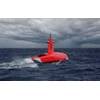Global subsea hardware Capex will total $145 billion between 2015 and 2019, Douglas-Westwood (DW) forecasts in its new World Subsea Hardware Market Forecast 2015-2019.
Report author, Ben Wilby, commented, “This represents growth of more than 27% compared with the preceding five-year period. The 350 subsea tree installations in 2014 represent the highest volume of installed units on record, a trend expected to continue until 2018 when lower orders in the current commercial environment will drive a decline in trees installed for that year.
“The crude oil price decline, apparent since June 2014, presents a major challenge for operators of subsea developments. Subsea projects are typically among the most capital intensive and technologically challenging in the industry. As operators (and their investors) have increased focus on cash flow, the higher upfront costs associated with these projects have left them vulnerable to deferrals and cancellations. Tree orders in 2014 totaled 233, the lowest volume for a decade.”
Assistant report editor, Matt Loffman, continued, “Despite these near-term concerns, the long-term fundamentals of the subsea hardware industry are strong and represent a growth story as they benefit from continued hydrocarbon demand growth, declining conventional reserves and technological improvements. Over the next five years, development activity in the established deepwater provinces, coupled with the start of field development in frontier areas, such as the Eastern Mediterranean and East Africa, will support expenditure.
“Subsea hardware spend will be the highest in Africa, Asia and Latin America, with the three regions combining to form almost half of the global total. Expenditure continues trending towards deeper waters with around 42% of total spend in the next five years targeting projects in water depths greater than 1,000 meters.
“Subsea production equipment, SURF and pipelines each attract approximately one third of all expenditure by component, with higher capacity and capability equipment a theme throughout the sector. The development of remote fields, the addition of new project phases and the tie-back of satellite fields into subsea hubs continue to support SURF expenditure over the forecast period.“












 February 2025
February 2025



